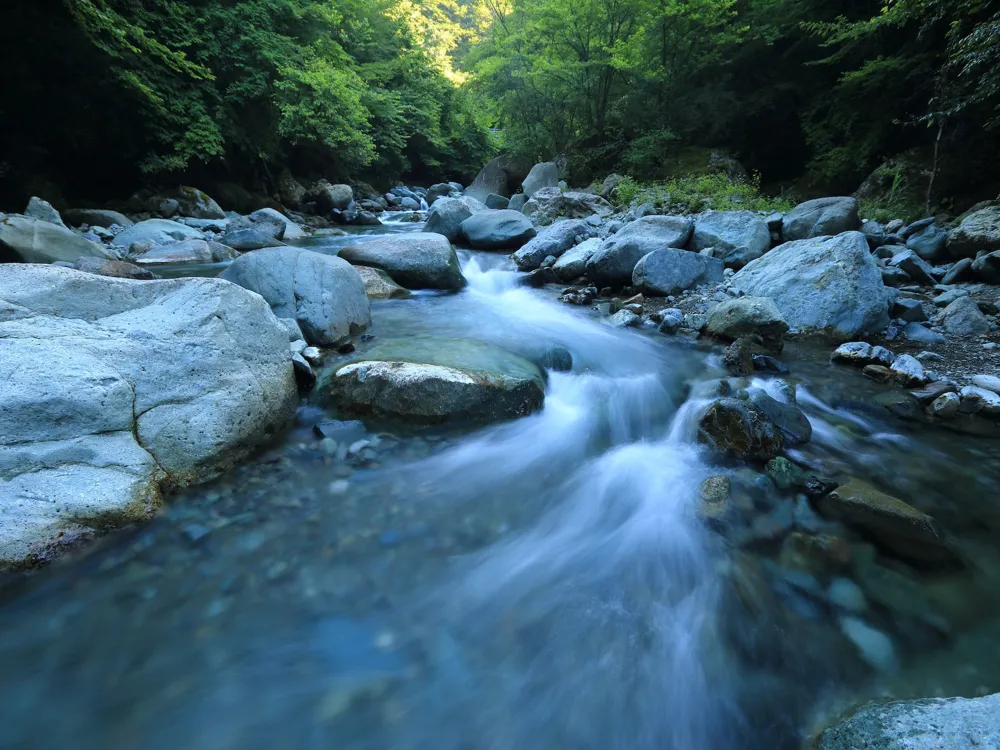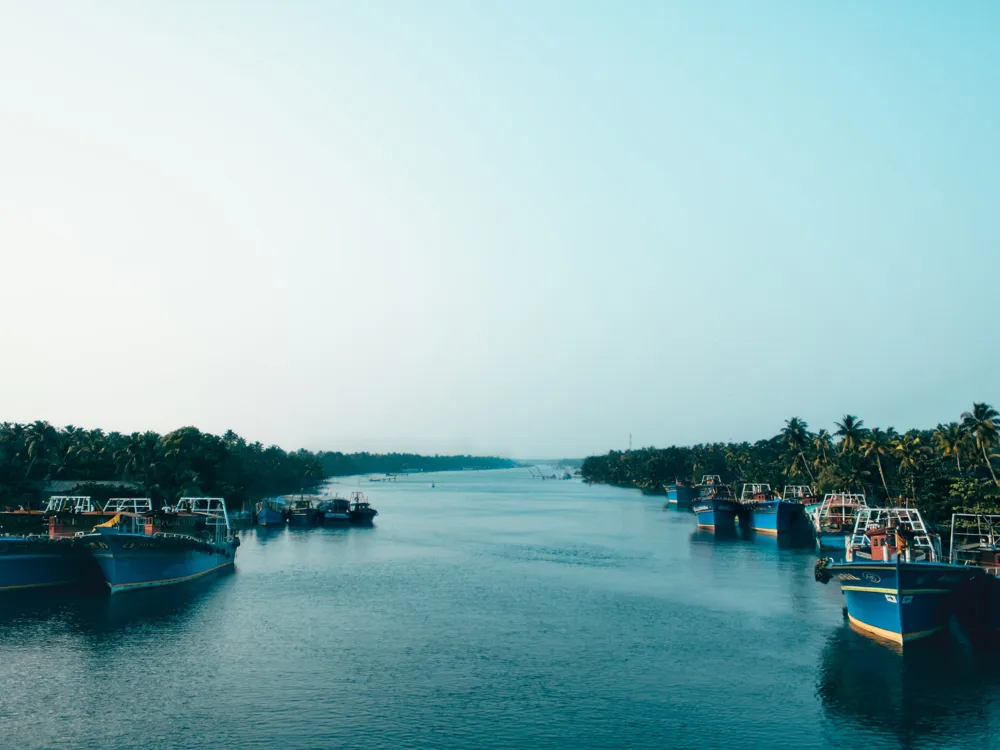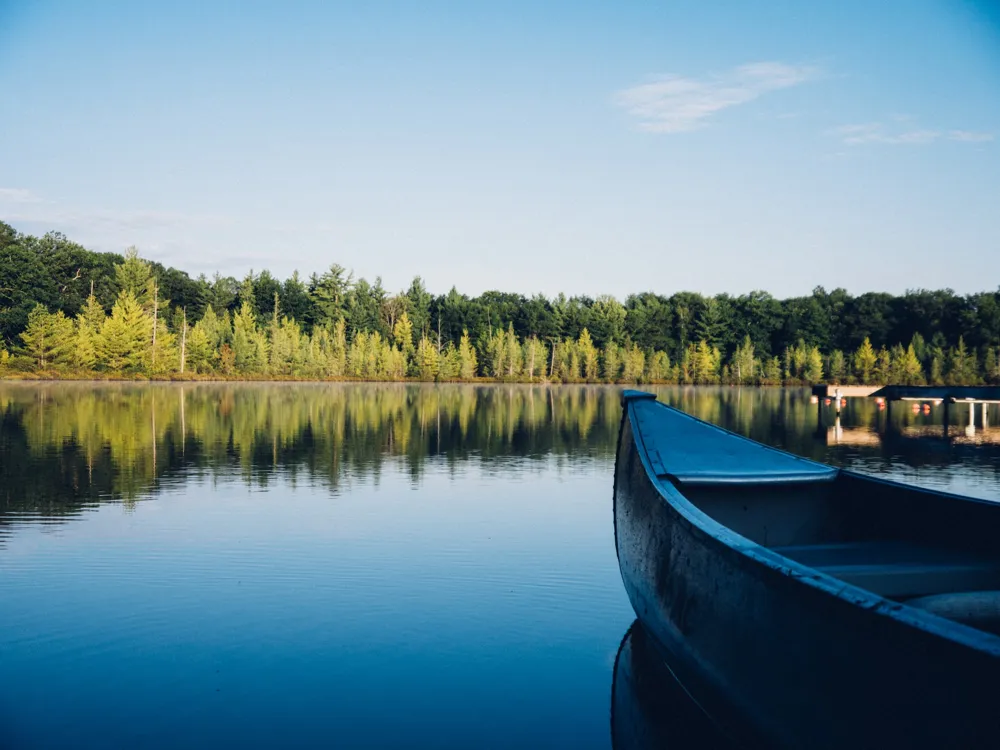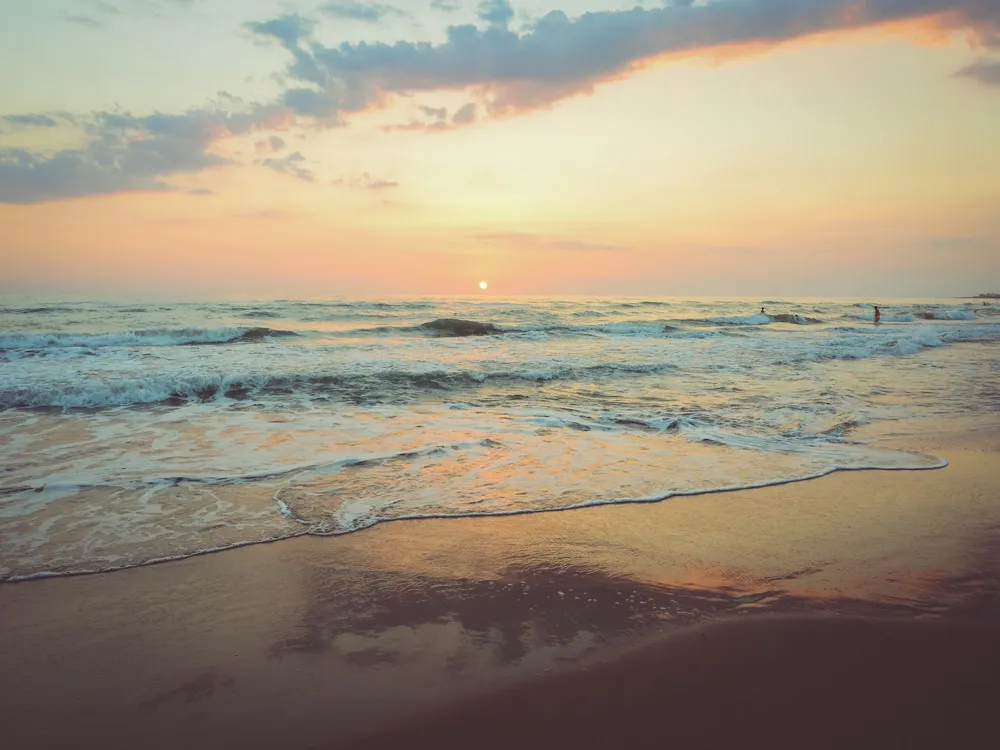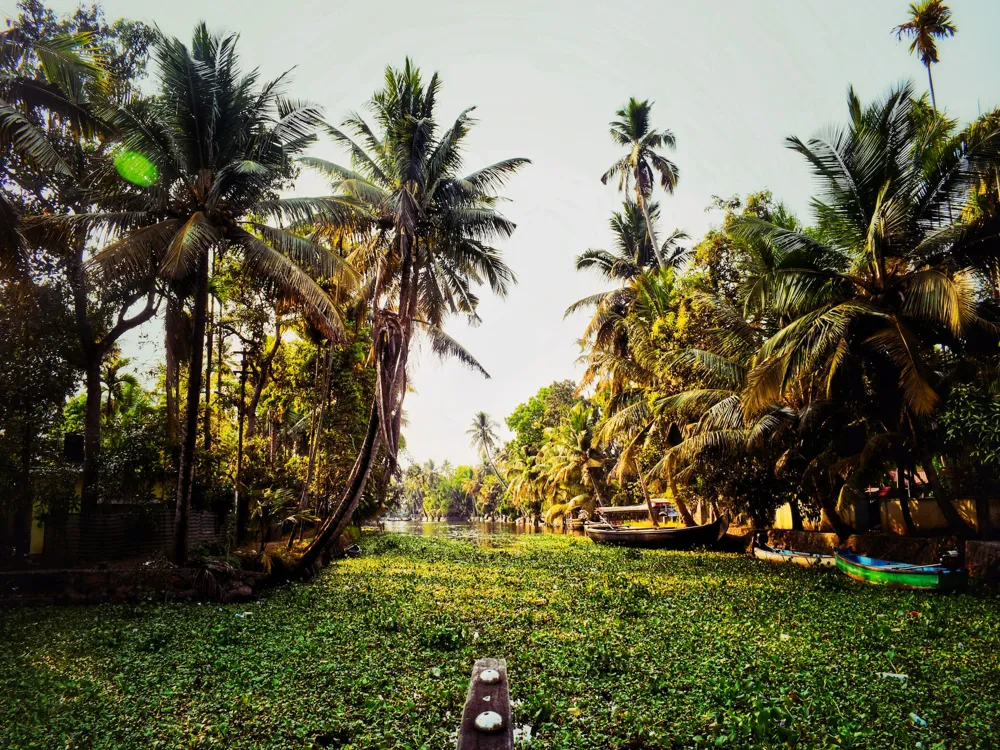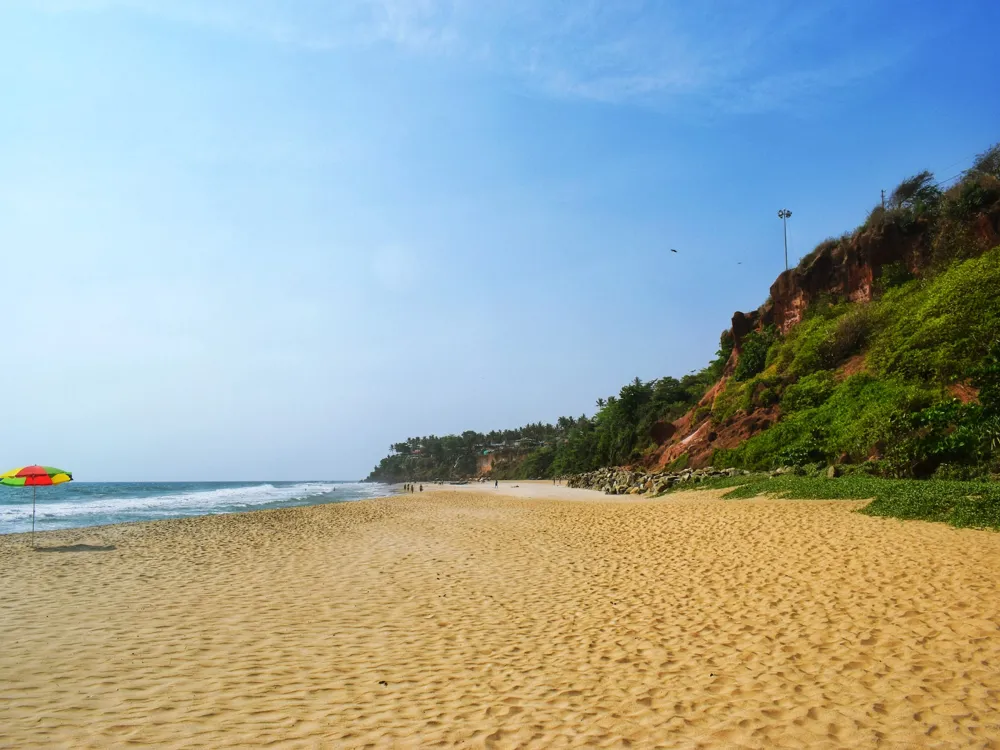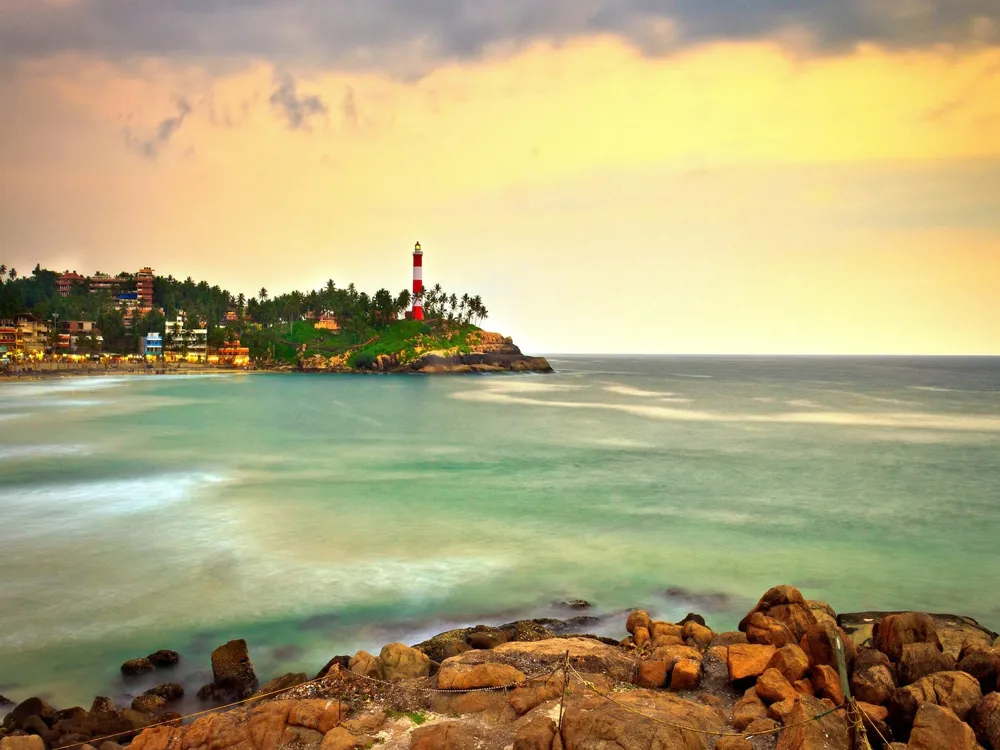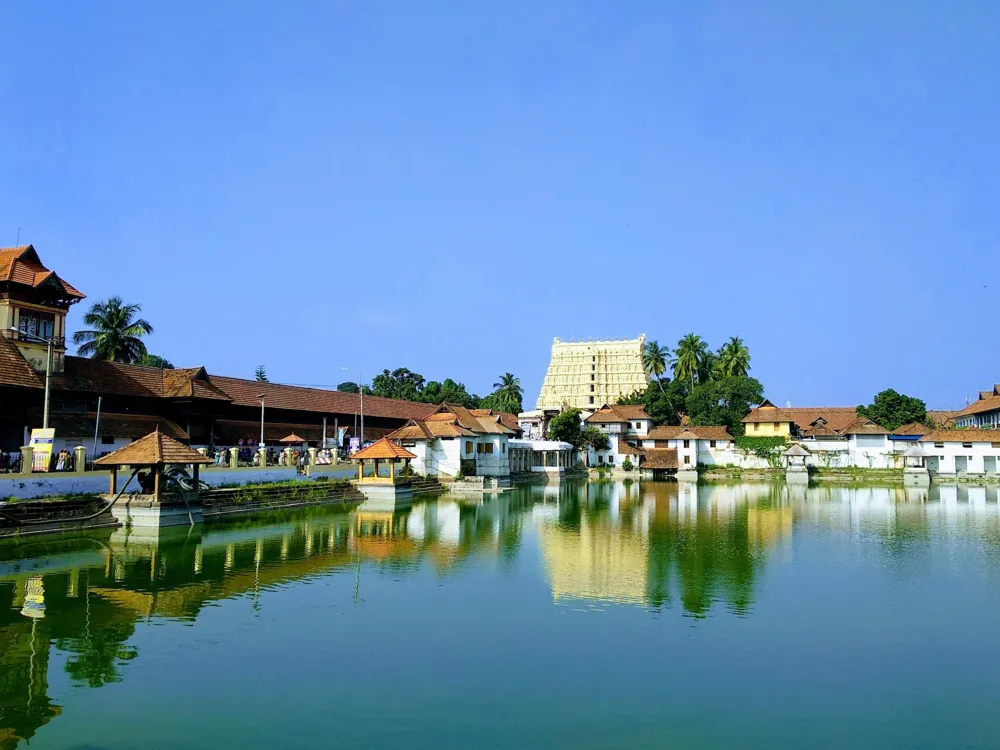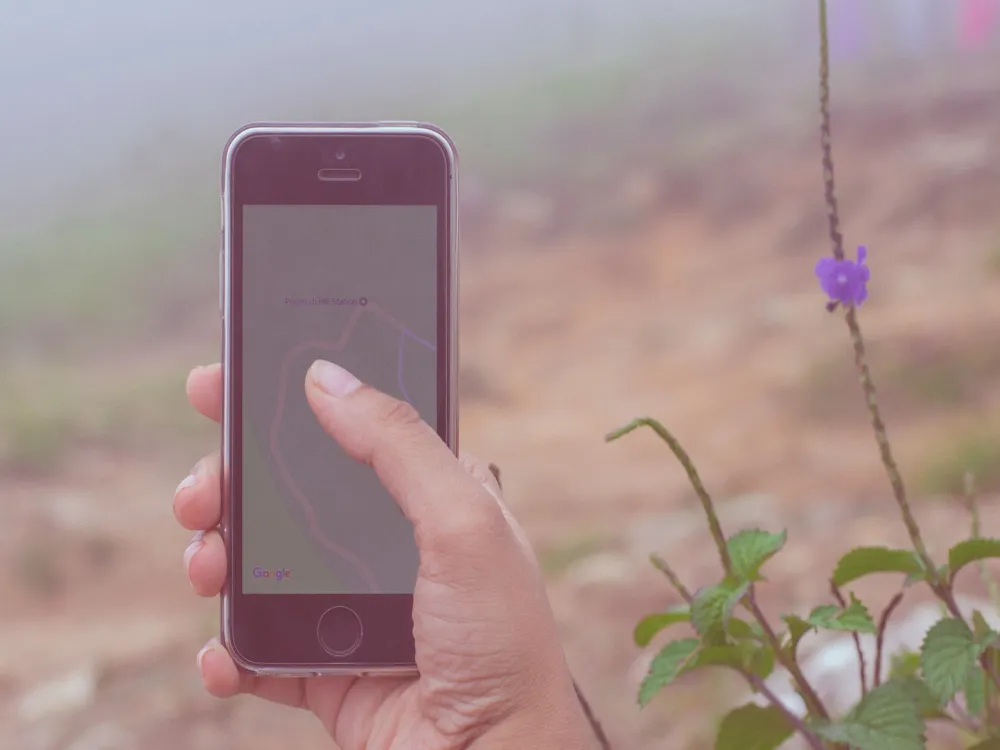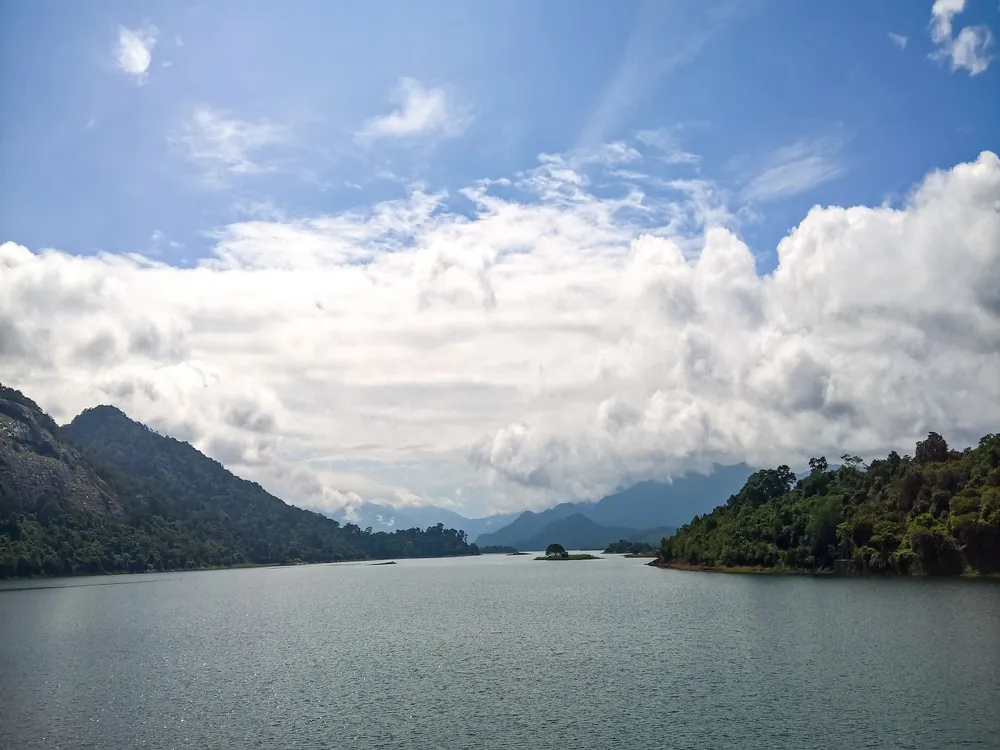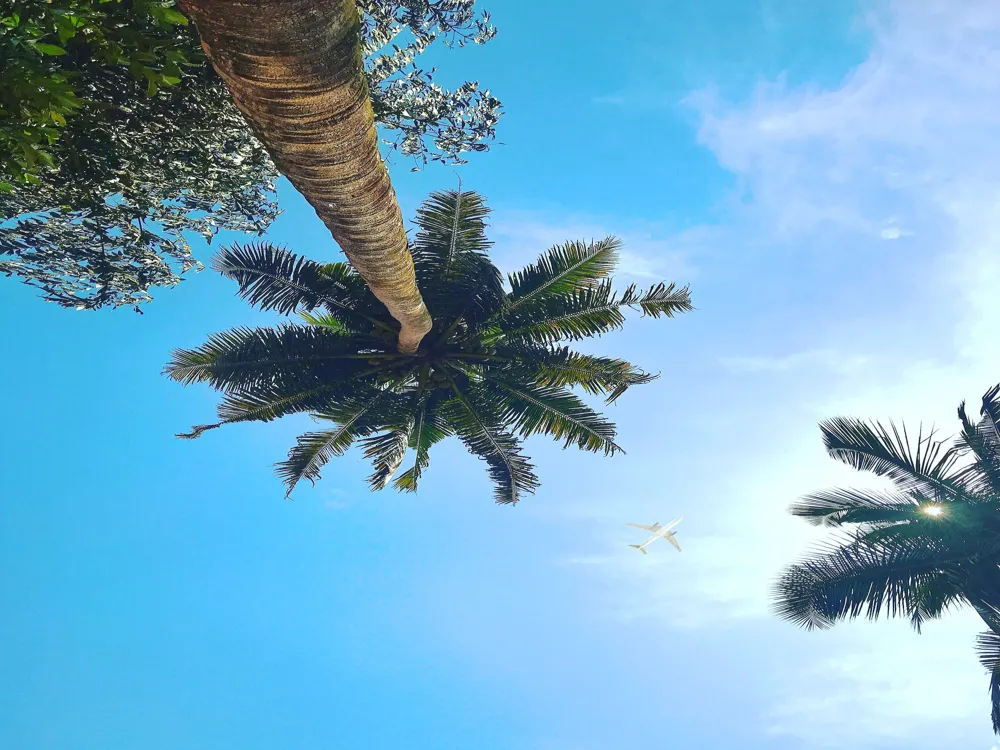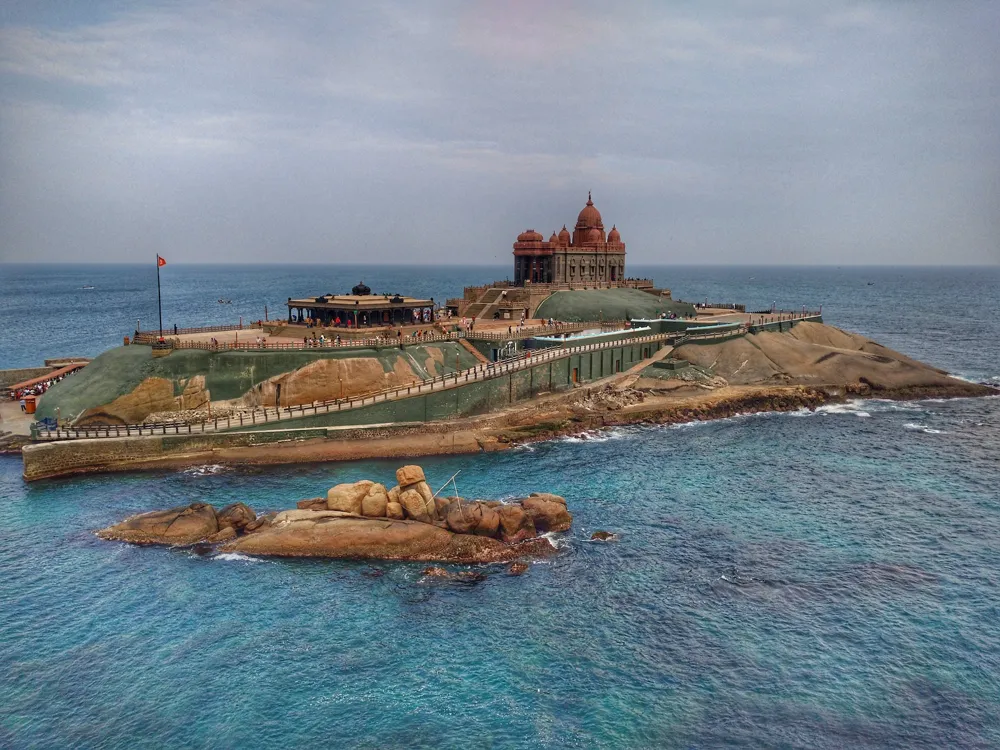Paravur Lake, nestled in the picturesque district of Kollam in Kerala, South India, is a serene and stunning estuary where the Ithikkara River merges with the Arabian Sea. This majestic lake covers an expansive area, offering a tranquil retreat for nature lovers, bird watchers, and adventure enthusiasts alike. The lake is not only a vital source of fishing and local livelihood but also a critical part of the region's ecosystem, supporting a diverse range of flora and fauna. The history of Paravur Lake is deeply interwoven with the cultural and economic tapestry of Kollam. Historically, the lake has been a pivotal point for trade and commerce, with its shores witnessing the exchange of goods and culture. The surrounding area is rich in historical significance, with numerous temples and architectural marvels dating back centuries. The community around Paravur Lake is a melting pot of various cultures and traditions, reflecting the rich heritage of Kerala. The biodiversity of Paravur Lake is truly remarkable. The lake's brackish waters are home to a variety of fish species, while the surrounding wetlands host numerous species of migratory birds, making it a paradise for birdwatchers. The lush greenery around the lake, comprising of coconut groves and traditional Kerala vegetation, adds to the scenic beauty, making it a photographer's delight. Visiting Paravur Lake offers a unique opportunity to experience Kerala's backwaters' serene beauty away from the more crowded destinations like Alleppey. The lake's calm waters are ideal for boat rides, giving visitors a chance to immerse themselves in the natural beauty and tranquility of the area. The local houseboats and canoes offer an intimate glimpse into the traditional Kerala way of life, gliding through the scenic waterways. In recent years, Paravur Lake has gained attention for its eco-tourism potential. Efforts are underway to preserve the lake's natural beauty while promoting sustainable tourism practices. This includes initiatives to maintain the lake's cleanliness, protect the local wildlife, and support the livelihoods of the local communities through tourism. The architecture around Paravur Lake is a testament to Kerala's unique building styles, influenced by both indigenous and colonial aesthetics. The traditional homes and buildings near the lake are characterized by their steeply pitched roofs, wooden frames, and expansive verandas, designed to withstand the humid tropical climate of the region. These structures are often adorned with intricate wood carvings and tiled roofs, reflecting the skilled craftsmanship of the local artisans. One of the architectural highlights in the vicinity of Paravur Lake is the ancient temples that dot the landscape. These temples, some of which are several centuries old, showcase the classical Kerala temple architecture. They feature unique elements like the 'gopuram' (tower), intricately carved wooden panels, and copper-clad roofs. The temples are not just places of worship but also serve as cultural hubs, hosting various festivals and rituals that are a spectacle to witness. The influence of European colonial architecture is also evident in some of the older buildings around Paravur Lake. These structures, built during the British and Portuguese periods, feature a blend of European and traditional Kerala architectural elements. The use of large windows, spacious courtyards, and high ceilings in these buildings was a response to the local climate, ensuring airflow and keeping the interiors cool. The boat houses and fishing huts along the lake's shores are another integral part of the architectural landscape. These simple, functional structures are built using locally sourced materials like wood and palm leaves, reflecting the sustainable practices of the local community. The design of these huts is optimized for the needs of the fishermen, providing shelter and storage while being harmonious with the surrounding environment. In recent years, there has been a growing emphasis on eco-friendly and sustainable architecture around Paravur Lake. New constructions are increasingly adopting green building practices, using renewable materials, and incorporating features like rainwater harvesting and solar energy. This shift is not only environmentally responsible but also helps preserve the natural beauty and character of the lake and its surroundings. The ideal time to visit Paravur Lake is from October to March, when the weather is pleasant, and the chances of rain are minimal. This period is perfect for boat rides and bird watching, as migratory birds flock to the area during these months. Visitors can indulge in various activities like boating, canoeing, and fishing. Bird watching is particularly popular, as the lake attracts a wide range of migratory birds. Photography enthusiasts will find numerous picturesque spots around the lake. Trying out the local cuisine, especially the fresh seafood dishes, is a must. Local eateries and houseboats often serve traditional Kerala meals, which are both delicious and affordable. There are several accommodation options ranging from homestays to luxury resorts around Paravur Lake. Staying near the lake allows visitors to experience the local lifestyle and enjoy the serene environment. Visitors are encouraged to respect the local culture and environment. This includes dressing modestly, not littering, and being mindful of the local wildlife and habitats. Paravur Lake is well-connected by road and can be easily reached from Kollam city. The nearest airport is Trivandrum International Airport, about 60 km away. From the airport, one can hire a taxi or take a bus to Kollam and then proceed to Paravur Lake. The nearest railway station is at Paravur, which is well-connected to major cities in Kerala and other parts of India. Local transportation options like auto-rickshaws and taxis are readily available for the final leg of the journey to the lake. Read More:Overview of Paravur Lake, Kollam, Kerala
Architecture of Paravur Lake
Tips When Visiting Paravur Lake
Best Time to Visit
Activities to Enjoy
Local Cuisine
Staying Near the Lake
Respecting Local Culture and Environment
How To Reach Paravur Lake
Paravur Lake
Kollam
Kerala
₹ 20,300 onwards
View kollam Packages
Weather :
Tags : Lake
Time Required : 1 - 2 hrs
Planning a Trip? Ask Your Question
Kollam Travel Packages
View All Packages For Kollam
Top Hotel Collections for Kollam

Private Pool

Luxury Hotels

5-Star Hotels

Pet Friendly
Top Hotels Near Kollam
Other Top Ranking Places In Kollam
View All Places To Visit In kollam
View kollam Packages
Weather :
Tags : Lake
Time Required : 1 - 2 hrs
Planning a Trip? Ask Your Question
Kollam Travel Packages
View All Packages For Kollam
Top Hotel Collections for Kollam

Private Pool

Luxury Hotels

5-Star Hotels

Pet Friendly







